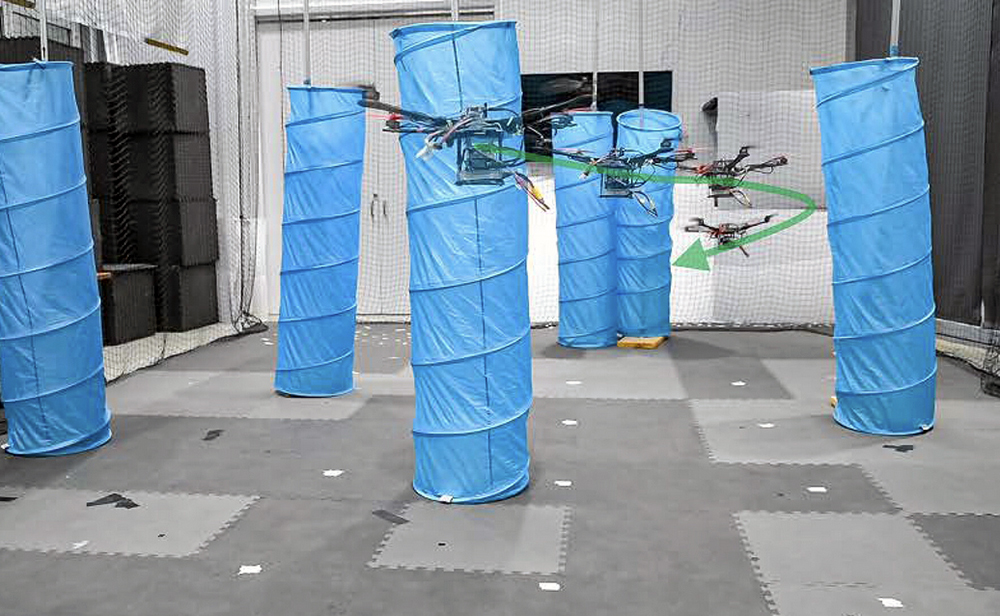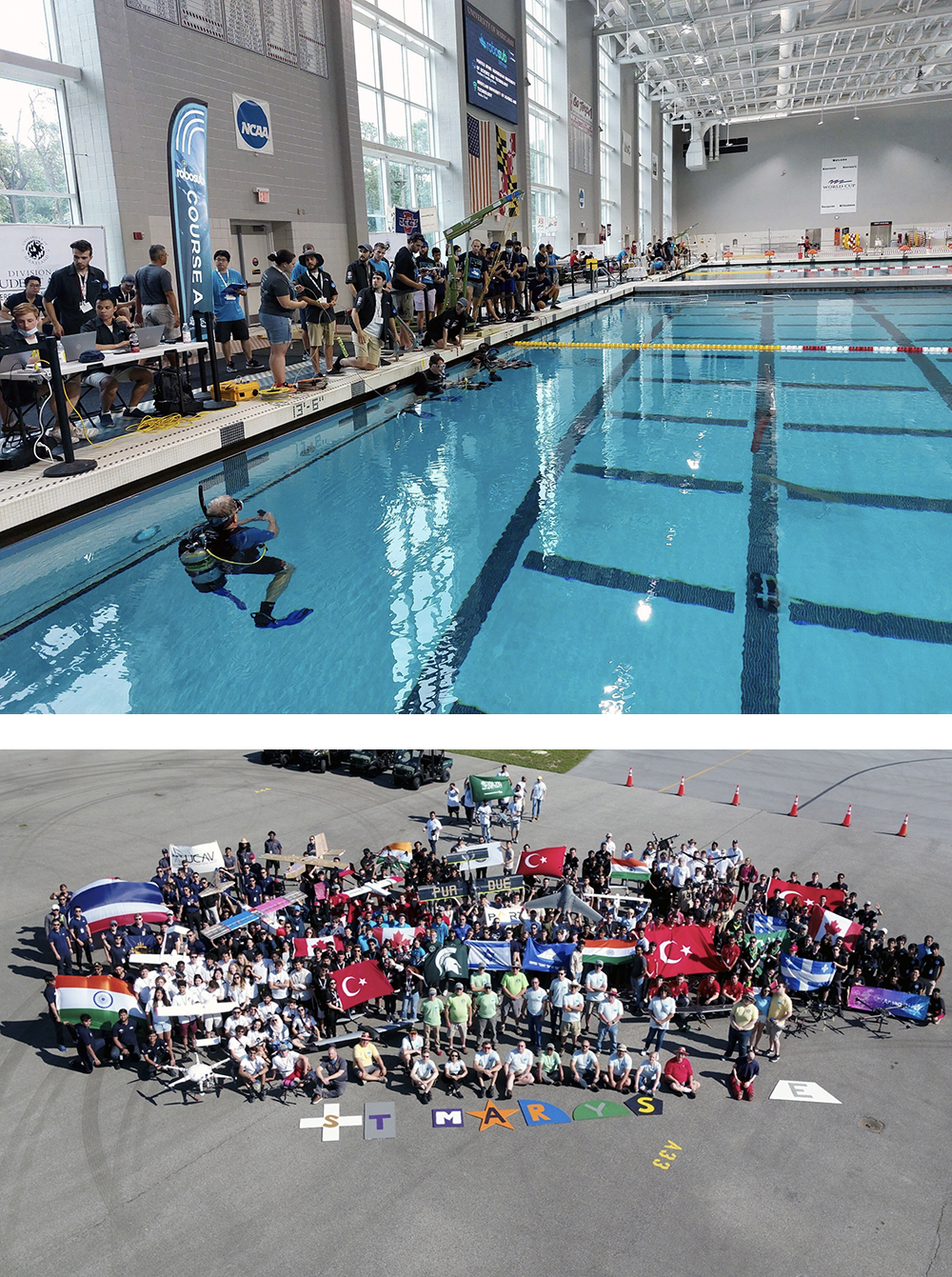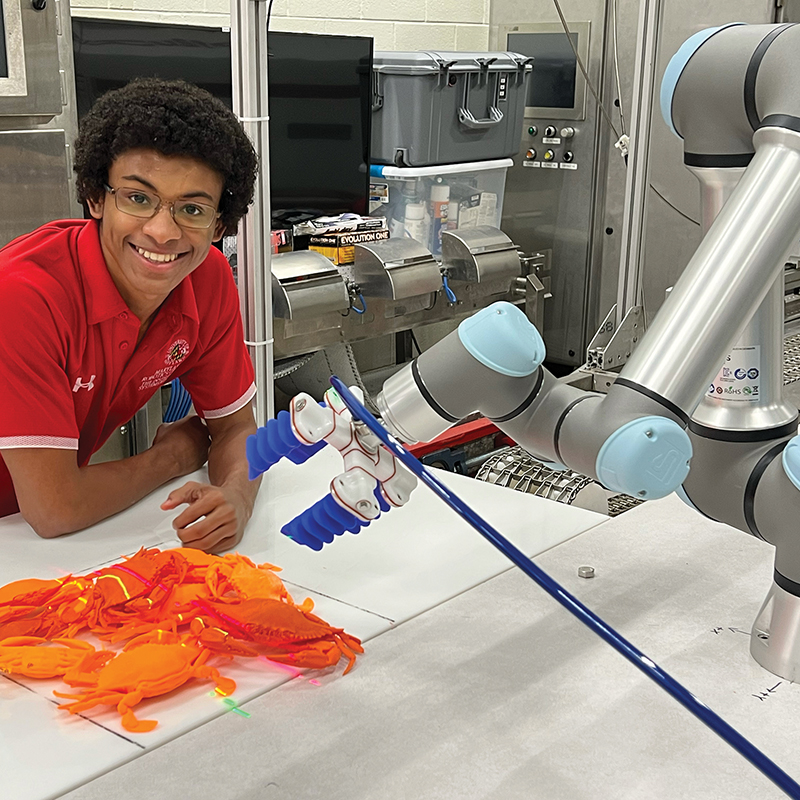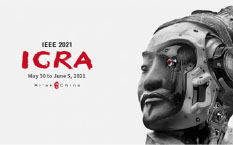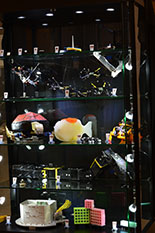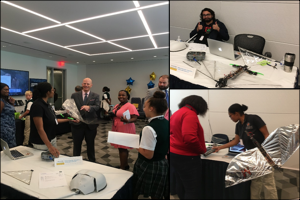News Story
Maryland Robotics Center Demonstrates Robots at Maryland Day 2019

Top to bottom: Robotics demos in the Kim Rotunda; Hydroponic robotic farming system; Emotionally intelligent robot Pepper; Advanced Robotics Laboratory; Neutral Buoyancy Research Facility; UMD Robotics Club team members
On Saturday, April 27th, 2019, the University of Maryland, College Park, celebrated its 21st Maryland Day, a campus-wide open house. Every year during Maryland Day, numerous departments showcase their research and labs. Visitors can participate in family-friendly educational outdoor and indoor activities, events, and exhibits.
This year, the Maryland Robotics Center-affiliated students and faculty demonstrated their robots in several locations on campus. Inside the Kim building rotunda, Mechanical Engineering PhD students Lena Johnson and Ruben Acevedo and Aerospace Engineering undergraduate student Benz Huynh demonstrated bio-inspired robots (Robo Terp, Robo Crab, Robo Raven, and a soft underactuated robotic hand called the SUR Hand) while Aerospace Engineering undergraduate students Camilo Melnyk and Sharon Shallom presented and discussed their drones.
At the Robotics Realization Laboratory (RRL), the lab manager Ivan Penskiy and an ECE undergraduate student Sahil Sharma introduced visitors to Baxter, a humanoid robot, and its capabilities. Using Baxter, they demonstrated differences between direct joint vs inverse kinematics control. Visitors could also try navigating Turtlebot robotic platforms and perform simultaneous localization and mapping (SLAM). On display in the lab were also miniature robotics.
In the courtyard of the Animal Science and Agricultural Engineering Building, a Mechanical Engineering undergraduate student William Washburn and an Environmental Science and Technology undergraduate Diego Santaella showed a futuristic hydroponic farming system built by the Master of Engineering students that will soon be serviced by robots.
At the Iribe Center, GAMMA research group showcased an emotionally intelligent robot called Pepper which could read visitors’ facial expressions and real-time emotions. Autonomous mapless robots were also seen moving among the crowds at the center.
Over in the Advanced Robotics Lab in the Kim Building, undergraduate Aerospace Engineering students YeHie (Joy) Cho, Tuvia Rappaport, Jeffrey Zhu, Danil Bribok, and Associate Research Scientist Dr. Craig Carignan demonstrated “Dymaflex”, an air bearing robot with an arm attached floating on a table to simulate zero G; the SAMURAI robot arm that gets mounted on a deep sea vehicle for retrieving samples; and the MGA Exoskeleton which is being used for controlling a remote robot arm doing servicing tasks in space.
The Neutral Buoyancy Research Facility with its 50 feet wide and 25 feet deep water tank (large enough to accommodate equipment, robots, and people) showcased the Ranger NBV performing satellite servicing operations in the neutral buoyancy tank. The RAVEN Rover for lunar operations was on display in front of the building.
The Manufacturing building undergraduate Aerospace Engineering students Joshua Piccoli, Peter Ryseck, Qingwen Wei, Chris Shea, and Joshua Lee, members of the First-Year Innovation and Research Experience (FIRE) Autonomous Unmanned Systems team advised by Professor Derek Paley and Dr. Derrick Yeo, demonstrated their autonomous vehicles.
Published April 29, 2019
